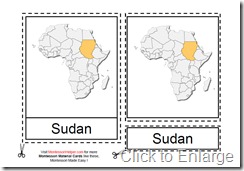Reading and Writing go together and start in the senses. The child develops sensorial skills that will help them to later master the elements of reading and writing generally well before the Age of 6.
We have included the methods to reading and writing in summary form on the same page below.
If you would like to get our complete ebook for learning to read and write by Age 6 which includes all the materials you will need, you can purchase it via scribd for only $14.95 or if you signup as a MontessoriHelper Premium Member it is automatically included as part of your membership !
The reading and writing activities should be commenced roughly around the same time between the ages of 3 and 6.
Writing Activities in the Montessori Method
| A child can learn to write using the Montessori Method typically between the Ages of 3 and 6. The Stages of this Process are detailed below. It is important for the child to Master a Stage before Proceeding to the Next Stage. |
| Materials Needed
– The Sandpaper Letters
 Montessori Sandpaper Letters Lower Case
– Flour Tray
– Blackboard
– Unlined paper
– Large lined paper
– Small lined paper
– Tracing cards or copying cards, for the child to trace or copy.
(Alternatively, the tracing / copying card will repeat a letter e.g. a, a, a, a, a, a, a or b b b b b b b on one card.)
– Thick pencils, thinner pencil crayons, lead pencils.
|
|
|
| Ages 3 ½ – 6 years approx.
|
| Stage 1
Using the sandpaper letters, invite the child to write the letters in the Flour.Show the child where the letter begins to form.
Show the child how to shake the tray so that the letter disappears so that he can write a new letter or sound.
Do not correct the child at this stage, but keep inviting the child to trace the sandpaper letter to reinforce the shape of the letter. |
| Stage 2
Using the Sandpaper Letters, invite the child to write the letter on the blackboard.Show the child how to erase the letter with the duster and invite the child to try a new letter each time.
Do not correct the child at this stage, but keep inviting the child to trace the sandpaper letter to reinforce the shape of the letter. |
| Stage 3
Using the Sandpaper Letters, invite the child to write the letters on unlined paper.If the child is not confident to do these himself, then allow him to trace or copy, from a tracing card, on which are all the various letters of the alphabet.
Remember though that Copying the letters is more effective than tracing and some letters are easier than others to write.
Do not correct the child at this stage, but keep inviting the child to trace the sandpaper letter to reinforce the shape of the letter.
At this point the child may still be using thicker pencils.
|
| Stage 4
Put the movable alphabet out on a work mat.Tell the child that we are going to show them how to write groups of letters.
Tell the child that we will start with the “c” family and that the children should feel all the letters that feel the same shape.
The children should take out the letters from this family and place them on the lined mat.
The letters included would be: c a d g q o.
These letters are based on the round shape.
Let the child see the similarities and then invite him to write these letters on :
- A blackboard
- Prepared lines.
The child may be using the thinner pencils at this stage.
|
| Stage 5
Put the movable alphabet out on a work mat.Tell the child that we are going to show them how to write groups of letters. Firstly, we will place the letters on the mat and then we will write them.
Tell the child that we will write the letters from the “r” family and that the children should feel all the letters that feel the same shape.
The children should take out the letters from this family and place them on the lined mat.
The letters included would be : r n m h b p
Let the child see the similarities and then invite him to write these letters on :
- A blackboard
- Prepared lines.
|
| Stage 6
Put the movable alphabet out on a work mat.Tell the child that we are going to show them how to write groups of letters. Firstly, we will place the letters on the felt mat and then we will write them
Tell the child that we will write the letters from the “i” family and that the children should feel all the letters that feel the same shape.
The children should take out the letters from this family and place them on the lined mat.
The letters included would be : i t l u y j k
Let the child see the similarities and then invite him to write these letters on :
- A blackboard
Prepared lines.
|
| Stage 7
Put the movable alphabet out on a work mat.Tell the child that we are going to show them how to write groups of letters.
Tell the child that we will write the letters from the :” v” family and that the children should feel all the letters that feel the same shape.
The children should take out the letters from this family and place them on the lined mat. These letters are based on a slanted line.
The letters included would be : v w x
Let the child see the similarities and then invite him to write these letters on :
- A blackboard
- Prepared lines.
|
| Stage 8
Once the child has reached approximately 6 – 7 years of age, you can show the child how to write all the letters on Lined Paper. The letters should fit into the two lines.They are : a c e i m n o r s u v w x z
|
| Stage 9
Once the child has reached approximately 6 – 7 years of age, you can show the child how to write all the letters on Lined Paper. Show the child how to write letters that extend above the two lines.That is : b d f h k l t.
These are also known as the ASCENDERS.
|
| Stage 10
Once the child has reached approximately 6 – 7 years of age, you can show the child how to write all the letters that extend below the two lines.That is : g j p y
These are also known as the DESCENDERS. |
Reading Activities in the Montessori Method
Consonant and Vowel Sounds
The Montessori reading series is mostly focused on the phonetic aspect of language. The child will spend time learning the initial sounds. Next the focus is on identifying middle sounds
of words (emphasizing short vowel sounds), and the ending sounds of words. He does a lot of matching and sorting activities. Objects and pictures are matched by their sounds.
Blending Sounds
Once the child has mastered the twenty-six basic sounds of the alphabet, the directress will then start blending sounds with the child. She may do this with sandpaper letters or the movable alphabet, and it is done quite literally. The directress will place the two letters at opposite sides of the workspace, then slowly say their sounds. As she continues to repeat the sounds, she will move them closer together and say the sounds faster, until visually the sounds are next to each other and orally they are blended. A third and final sound will then be added. Many times word families are introduced.
The child also can practice blending sounds with the movable alphabet. He will try to make up some of his own words, sounding out words that he knows.
The pink series focuses on words with three individual sounds. Most commonly they are consonant-vowel-consonant words, such as cat, rug, mat, etc. The child practices reading these words by labeling objects or pictures with cards. He practices spelling all of them with the movable alphabet. He also begins to learn sight words and starts work in appropriate phonetic readers.
In the blue series, short vowels are continued, but there are often more than three individual phonemes in the word. The child has to sound out consonant blends, which are when the two consonants keep their individual sounds. Initial consonant blends include bl, br, bl, cr, dr, fl, fr, gl, gr, pl, pr, sc, scr, sk, sp, spr, st, str, tr. Final consonant blends include ct, ft, lt, mt, nt, pt, st, lm, ln, lp, mp. Consonant digraphs are also introduced. These include ch, ph, sh, th, wh, kn. Words may be as short as raft and whip, or as long as infant and pumpkin.
Activities in this series again include object and picture labeling and movable alphabet practice. He can also use materials for sentences instead of words. Appropriate readers are slightly more advanced than those for the pink series.
In the green series, the rest of the phonetic sounds are introduced. Long vowels are introduce with the “Silent E” for example. Vowels change their sound as r-controlled vowels: ar, er , ir, or, ur. Digraphs and diphthongs are also introduced as more phonograms (vowel/vowel and vowel/consonant combinations that make a unique sound when together).
Digraphs are two vowels that next to each other make on individual sound, such as ai and ea. Diphthongs are a pair of vowels that make two vowel sounds within the same syllable, such as oi, ou, oy. Again the child practices sorting, labeling, reading word lists, spelling with the movable alphabet, and reading more advanced books. As all of these phonograms are introduced, the potential length of the word is indefinite.
The Pink, Blue, and Green series facilitate the flow of the Montessori method in phonetic learning and in conjunction with foundation activities (like the sandpaper letters) are the basis of learning the structure of language.
Note: As much as Montessori is a method, it is also a philosophy. We suggest you consider familiarizing yourself with this by reading Montessori’s books. When it is understood how the lessons relate to each other in this context one can achieve better outcomes






































































 '
'